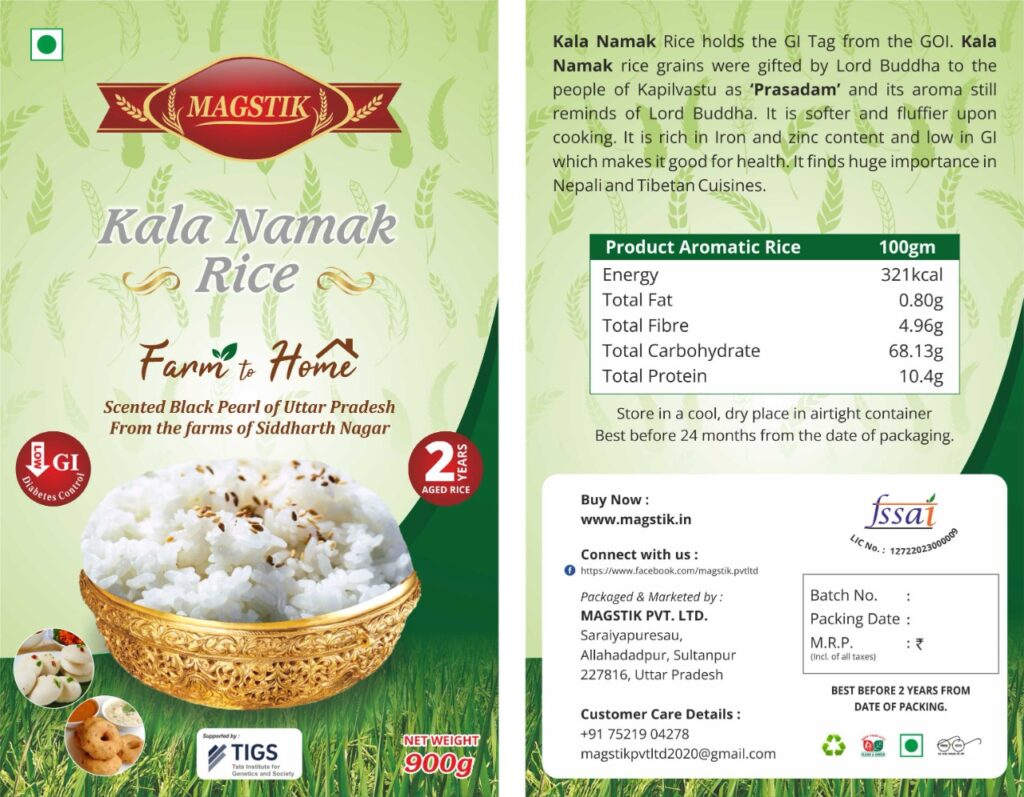There are over 120,000 rice varieties present in the world, however, during the commercialization age, only a few rice varieties are commonly available and known to the public. over 90% of people have not tasted more than 20 rice varieties. During the green revolution, certain rice features were promoted and many indigenous attributes got ignored. At Magstik we try to bring the real value to some of the rice treasures, that got left out in the last few decades. We try to empower the customers with comprehensive attributes connected with these less popular rice varieties. In the present blog, we present the historical connection of one such gem with Lord Budha – the famous Kala namak of Eastern U.P.

The name Kala Namak (kala = black; namak =salt) is derived from kala – the husk is black in color, and namak – this variety can be cultivated in the salty soil. The rice is white in color and has medium-sized grains. its main attribute includes its pleasant aromatic smell which is much more aesthetic compared to Basmati rice. As the rice ages, the aroma vanishes, but the texture and non stickiness increases.
Kala namak can be cultivated only in a restricted region in eastern U.P. It has been granted the Geographical Indication (GI) by the Government of India in 2013. The geographical area for Kalanamak rice lies between 26° 42′ North to 27° 75′ North Latitude and 81° 42′ to 83° 88′ East Longitude in the State of Uttar Pradesh, India. Siddharth Nagar and neighboring regions are the main regions of cultivation. Its native variety has long stems and its paddy production is much lower compared to short varities which were developed after the green revolution. This native variety is very famous in the local region and people are fond of this rice. they always aspire to taste the original variety. due to low production and local confinement it’s not very popular at global platform.
There is a famous connection of kala namak rice to the Lord Buddha. He was heading towards Kapilavastu after attaining enlightenment. He crossed the Bajha jungle in the Terai region and reached a place called Mathla. Here, the villagers stopped him and asked for blessings. The Buddha took this rice as alms and gave it to them: a short grain with unusual black husk. “Sow it,” he said. “It will have a special aroma. That aroma will always remind people of me”. From then the Kalanamak rice is popular as ‘Buddha Rice’, and used by Buddhist monks as offering, to promote it in Buddhist countries.
Kalanamak rice had been cultivated since the Buddhist period (600 BC). The kalanamak grains were found from the excavation of Kapilvastu. Kapilvastu is the Kingdom of Gautama Buddha’s father, King Śuddhodana, located in Terai region of Nepal. During the excavation of Aligarhwa carbonized rice grains resembling Kalanamak were being discovered in their kitchen store.
to know more about Kala namak and other hidden and forgotten gems, stay connected with us. Join us in our mission to bring the best-valued food products in the market.

most of the people call it Badshah Pasand rice.It is very soft and aromatic found in Basti Siddharthnagar, Behraich districts in wide range .People like it very much.
Thanks for the information. we collect all the local and scientific knowledge and make comprehensive reports.